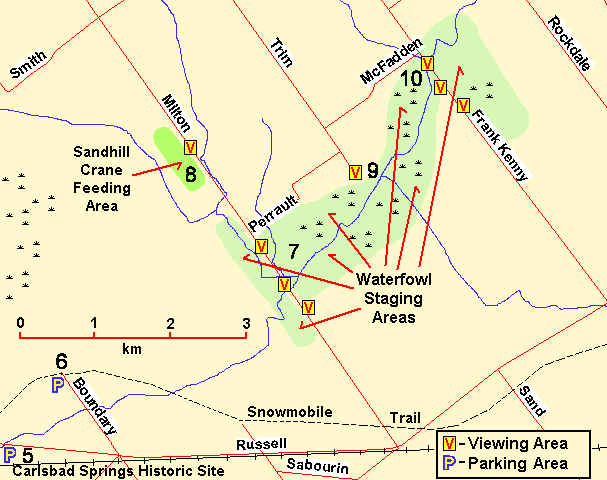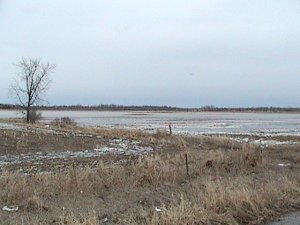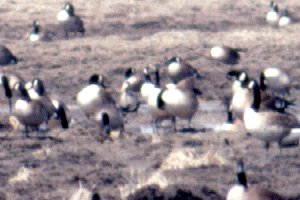BEAR BROOK at MILTON ROAD
Spring: **** Summer: ** Fall: * Winter: **
Independent Directions to this Site: From Highway 417 (The Queensway) take exit 96 (Boundary Road). Proceed 2.0 km NNW on Boundary Road to Russell Road (Regional 26). Turn right or ESE onto Russell and drive 3.5 km to Milton Road (Regional 31). Turn left or NNW on Milton and go about 1.0 km to the top of the hill heading down to Bear Brook - Milton Road. Park on the shoulder of the road and after scanning from here move ahead a further 1.0 km to park near the bridge.
Mer Bleue - French Hill Loop Route Directions: From the North End of Boundary Road, return SSE 1.8 km to Russell Road (Regional 26). Turn left or ESE onto Russell and drive 3.0 km to Milton Road (Regional 31). Turn left or NNW on Milton and go about 1.0 km to the top of the hill heading down to Bear Brook - Milton Road. Park on the shoulder of the road and after scanning from here move ahead 1.0 km to park near the bridge.
 Map of Bear Brook at Milton Road area
Map of Bear Brook at Milton Road area
Site Description and Birding Information: Each spring when the ice begins to break up (usually late March, but sometimes not until early April), waterfowl stream in to those low-lying areas prone to flooding. Bear Brook is one such location fairly close to the city. While sheer numbers do not rival Bourget and Riceville, they are still impressive. A good spotting scope is a big advantage here. The birds range all along the Bear Brook floodplain from Milton Road, past the tag end of Trim Road, all the way to Frank Kenny Road, nearly 3 km. As well, they often roost in the fields on the west side of Milton Road near here.
 Bear Brook Floodplain at Milton Road - Looking East
Bear Brook Floodplain at Milton Road - Looking East
Canada Geese number in the thousands at their peak. Sometimes reaching five figures, once, on Apr. 14, 1993, up to 50,000 were present. There are often a few Snow Geese and occasional Cackling Goose as well. Usually less than 20, but once up to 125 (Mar. 28, 1987). The challenge goosewise each year is to be the patient and sharp-eyed birder who finds the single Greater White-fronted Goose which has hidden itself among the rest. They are not found every year, but nearly so. Ross's Goose has occurred (Oct. 11, 2009). A good variety of ducks can be found wuth careful searching. Northern Pintail are the most common, but Mallard, Green-winged and Blue-winged Teal, Wood Duck, Black Duck and American Wigeon can usually be found. Sometimes an escapee adds spice (Ruddy Shelduck - Apr. 6, 1987 & Bar-headed Goose - Apr. 3, 1987 & Apr. 8, 1990).
 Find the Greater White-fronted Goose
Find the Greater White-fronted Goose
Because of the abundant food supply (ducks), Peregrine Falcons are occassionally attracted. If the entire gathering takes flight, quickly scan the sky to find the Peregrine Falcon or something that nervous ducks and geese might mistake one for, like a Bald Eagle. In winter, this area usually hosts a few Red-tailed and Rough-legged Hawks, 21 of the latter on Mar. 18, 1991. Snowy Owl has been found along Milton Road more than once.
This is also the first site on the Spring Flooding Route.
Mer Bleue - French Hill Loop Route Directions: From the bridge at the Bear Brook at Milton Road site, watch the fields on the west side of Milton Road (Regional 31) for the next 3.9 km NNW to Smith Road. This area forms the next site on this loop, Milton Road.
Return to Mer Bleue - French Hill Loop.
Return to Birding Ottawa Table of Contents.
|


